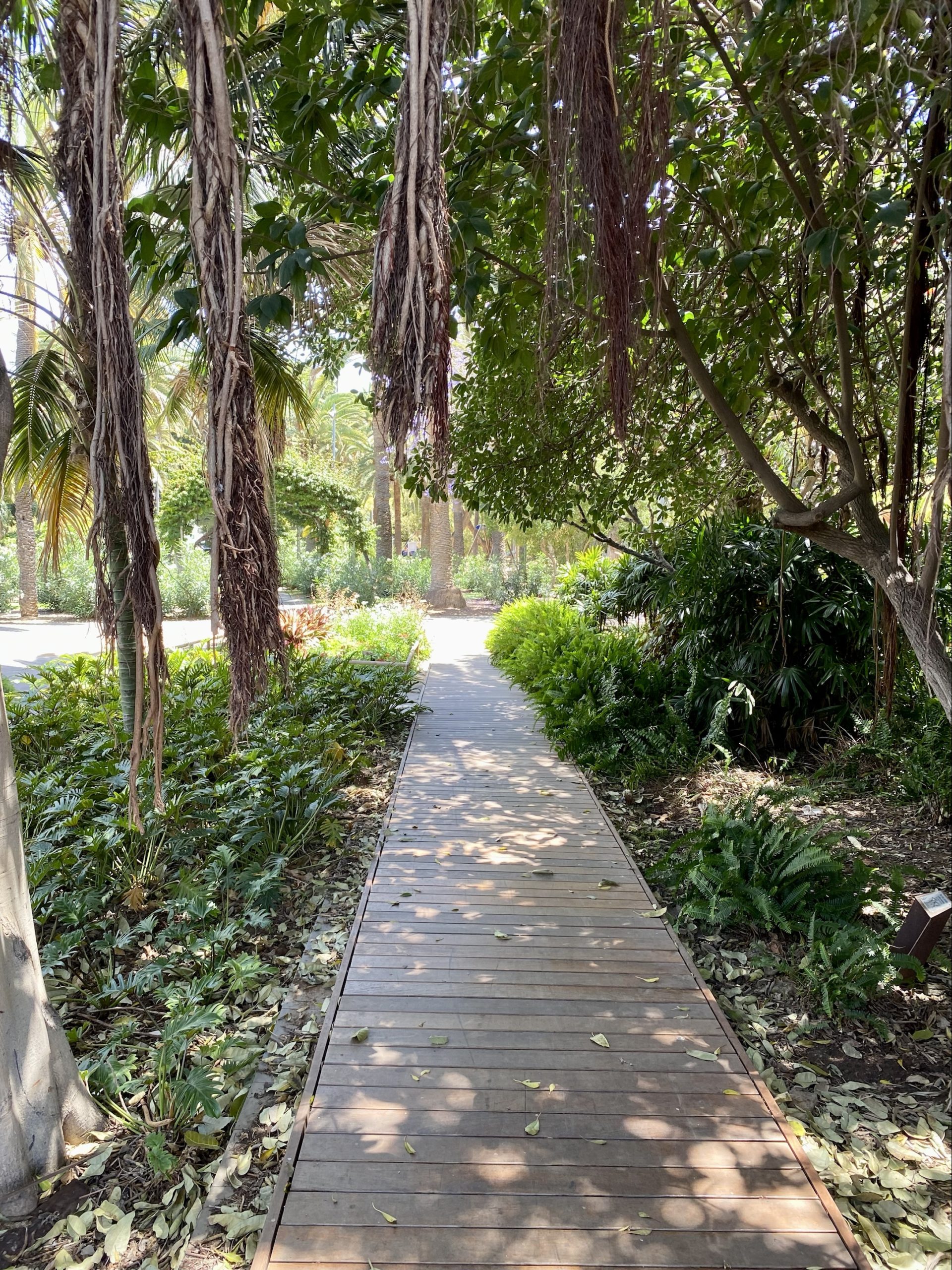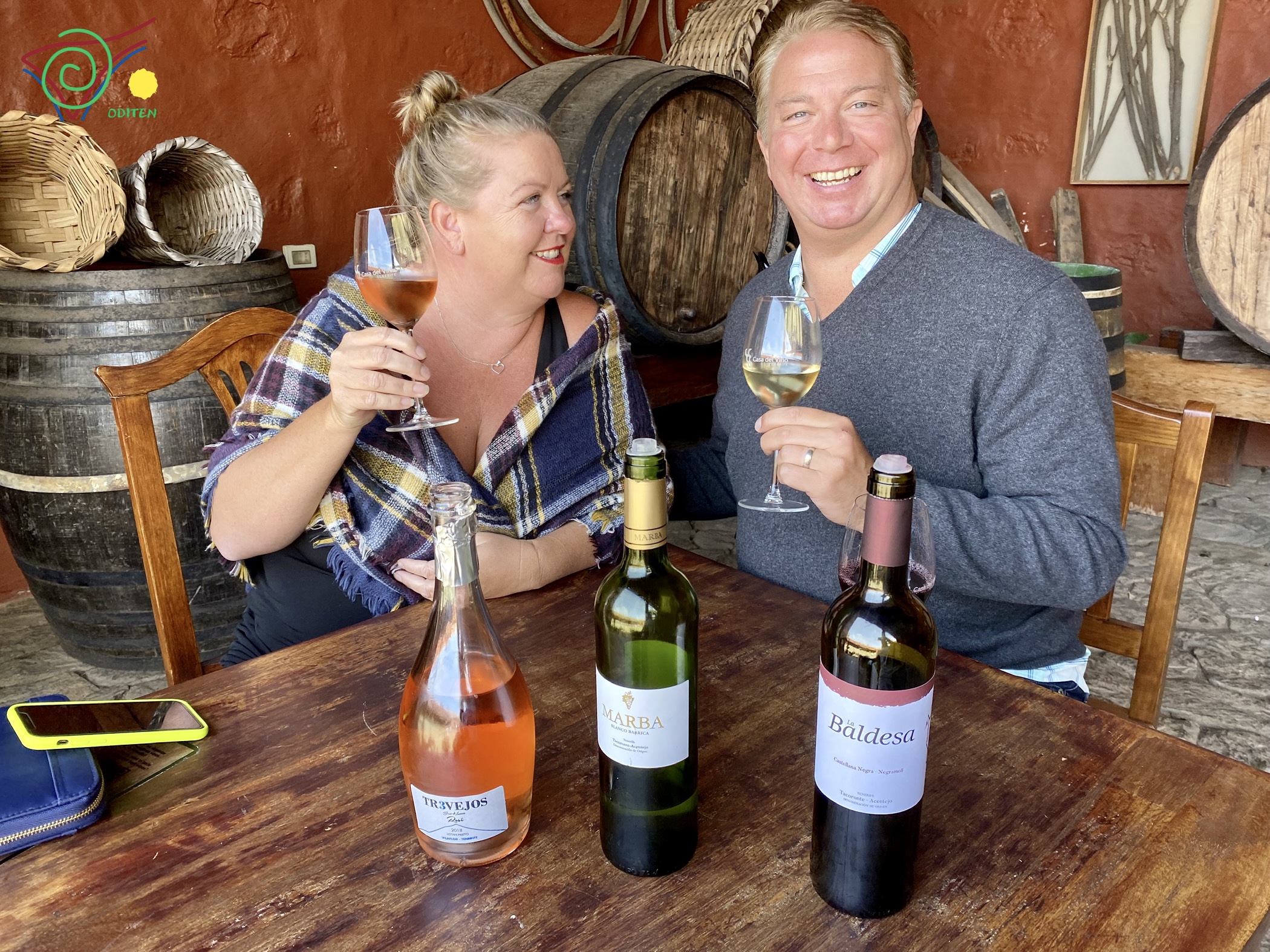
La Palma and Tenerife, Canary Islands, Spain
Preamble
This post is exclusively about drinking wine in the Canaries. We hope that everyone will enjoy reading about our experience, even if you’re not that into wine. We wove bits of history and fun photos into this post as well. If you have tried wine from Canary Islands, we’d love to hear about your thoughts on the wine or this post in the comments.
In case you’re wondering while you’re reading. Yes, we are drinking wine while we write this.
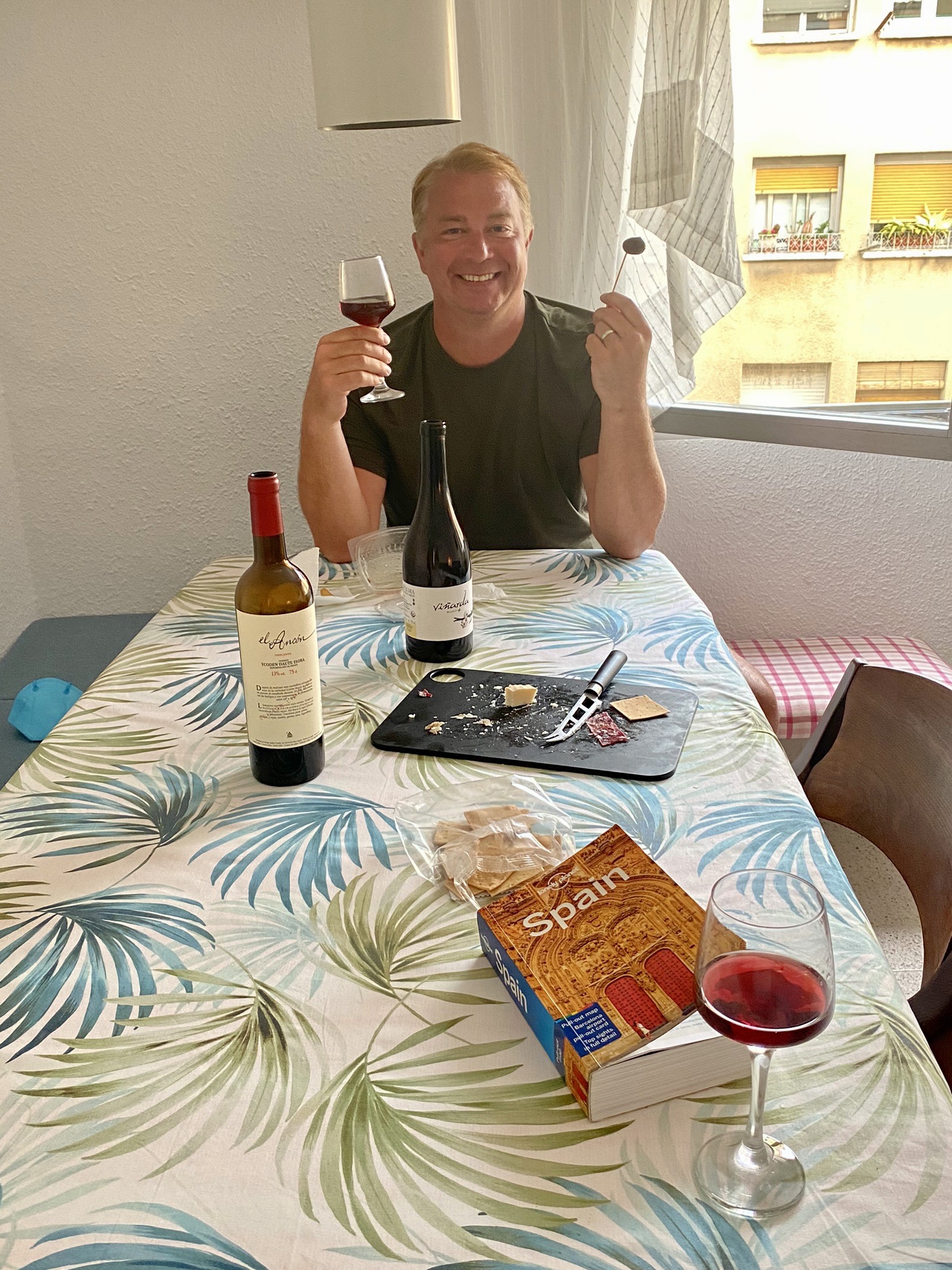
We are not trailblazers. We are fortunate to have friends, acquaintances, and the Internet to provide inspiration and recommendations on how to explore wine regions that are new to us. Vivino has also been helpful to store our tasting notes and experiences.
As many of you know, during the pandemic, we participated in weekly virtual wine tastings curated by Kelsey Glasser of Arden Restaurant in Portland, Oregon (with help from Wesley!). Especially in 2020 when there was not much else to do, these tastings were one of the highlights of our week. We had skipped her Canary Islands tasting because we were unable to find the wines in Washington. But being in the Canaries gave us an opportunity to track down some similar wines and then go back and watch her November 2020 presentation, which is archived on Instagram. If you want to learn about wine , how to “taste” wine, or just want some geography-based wine recommendations, check out the recorded tastings on Arden’s Insta. Each “class” is only an hour so easy to squeeze in a virtual tasting.

(The PDX food scene is blessed with so many great options. We always try to head to Arden when in Portland. Their patio is comfortable no matter the weather, and we look forward to eventually being back at the chef’s counter to try to figure out the secret to their amazing smashed potatoes. In the meantime, please visit and say hello to Kelsey and the wonderful team for us!)
We reached out to Kelsey for some Canary Island recommendations since it can be overwhelming to figure out where to taste on your own!
Brief Canaries Wine History
Most wine from the Canaries stays in the islands, and are difficult to find even on the “peninsula,” as the locals refer to mainland Spain. So we had to make the most of our two days to taste and purchase.
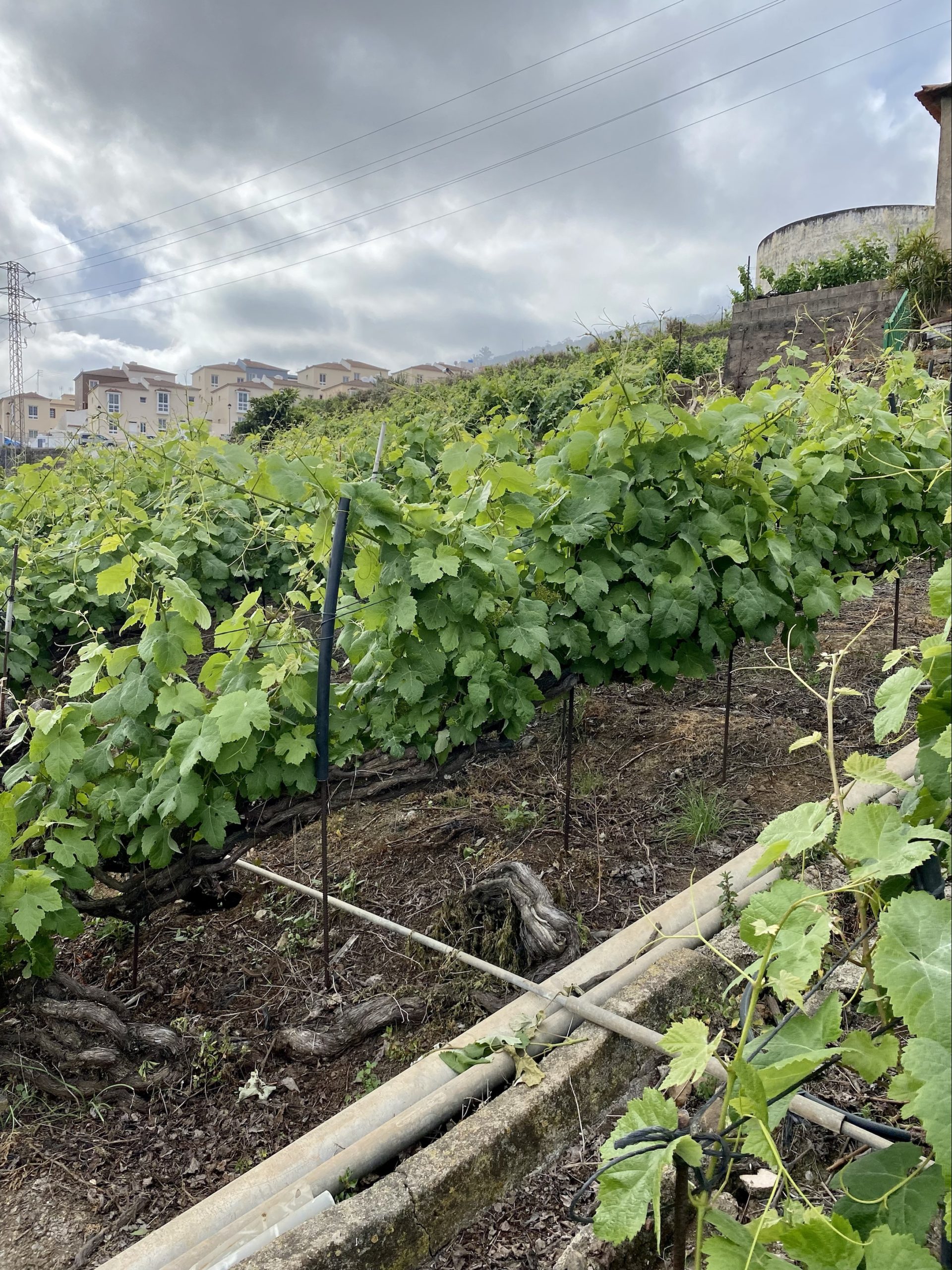
Phylloxera never reached the Canaries, meaning that some of the vines have been producing fruit for centuries, with some varietals that are not grown anywhere else in the world! The islands are also formed from volcanoes and have volcanic soils, so the roots have to work really hard which results in excellent tasting wines.
Much of the wine is still produced for bulk consumption. A tavern will have a house blanco (white) or tinto (red, but if you call it rojo, the waiter will laugh at you). These are delivered in a glass carboy surrounded by a plastic protector, as shown below, and served in a short glass for easy drinking. But stepping up to fine wines will only cost between 3-20 euros per bottle, with the occasional limited/reserve bottling exceeding that tariff.
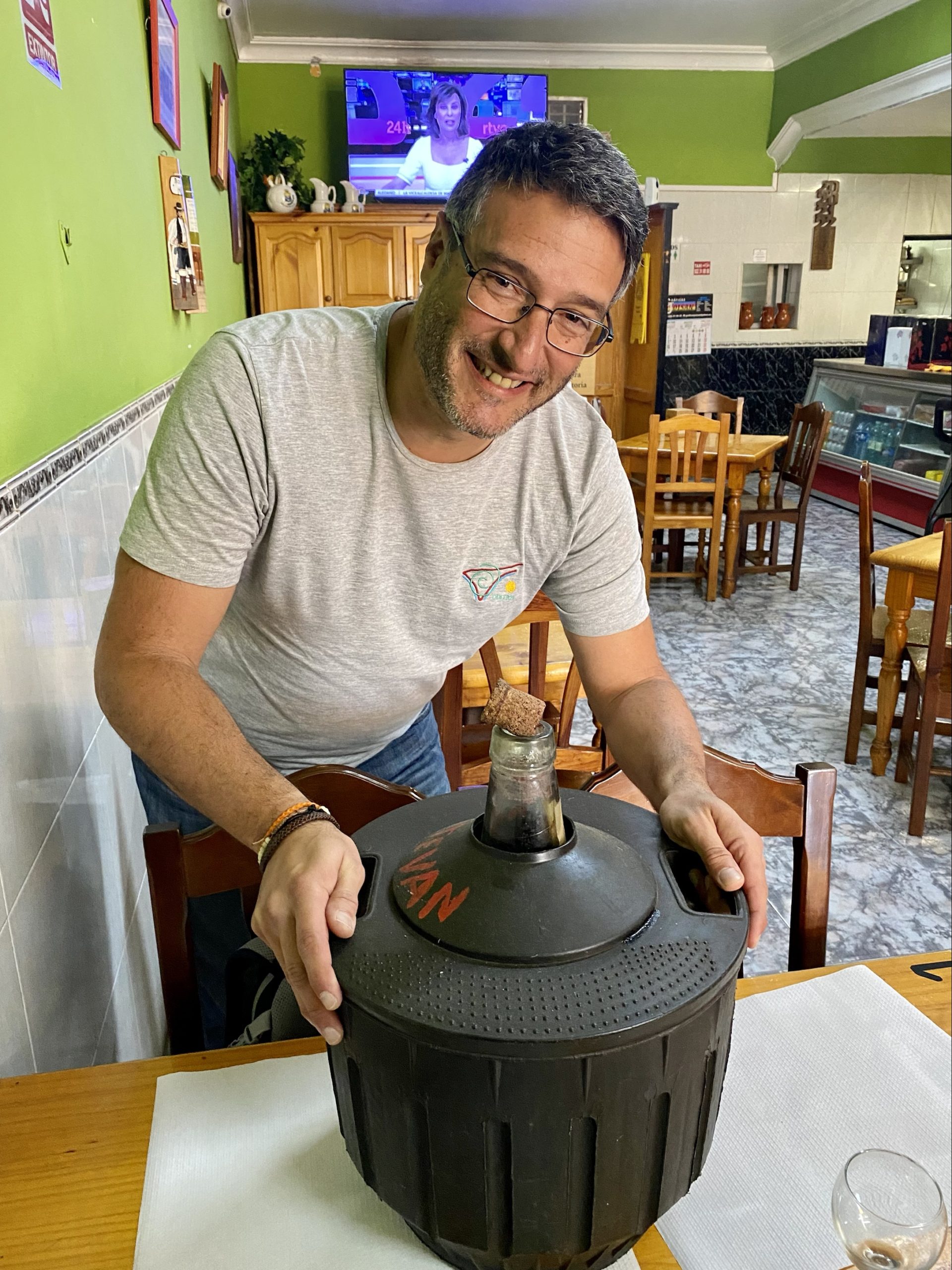
La Palma
While walking around in port, we entered a shop that appeared to be a typical tourist souvenir shop. But once we got to the back of the store, we were amazed at the amount of local wine available. There was a section just for La Palma wine, as well as a section for each of the other Canary islands, including Tenerife and Lanzarote. Even at port town prices, the local wines are readily available and inexpensive. We made a plan to walk around town more and go back and purchase some bottles. Dinner ended up taking too long and we ran out of time. So we only have photos of the bottles.
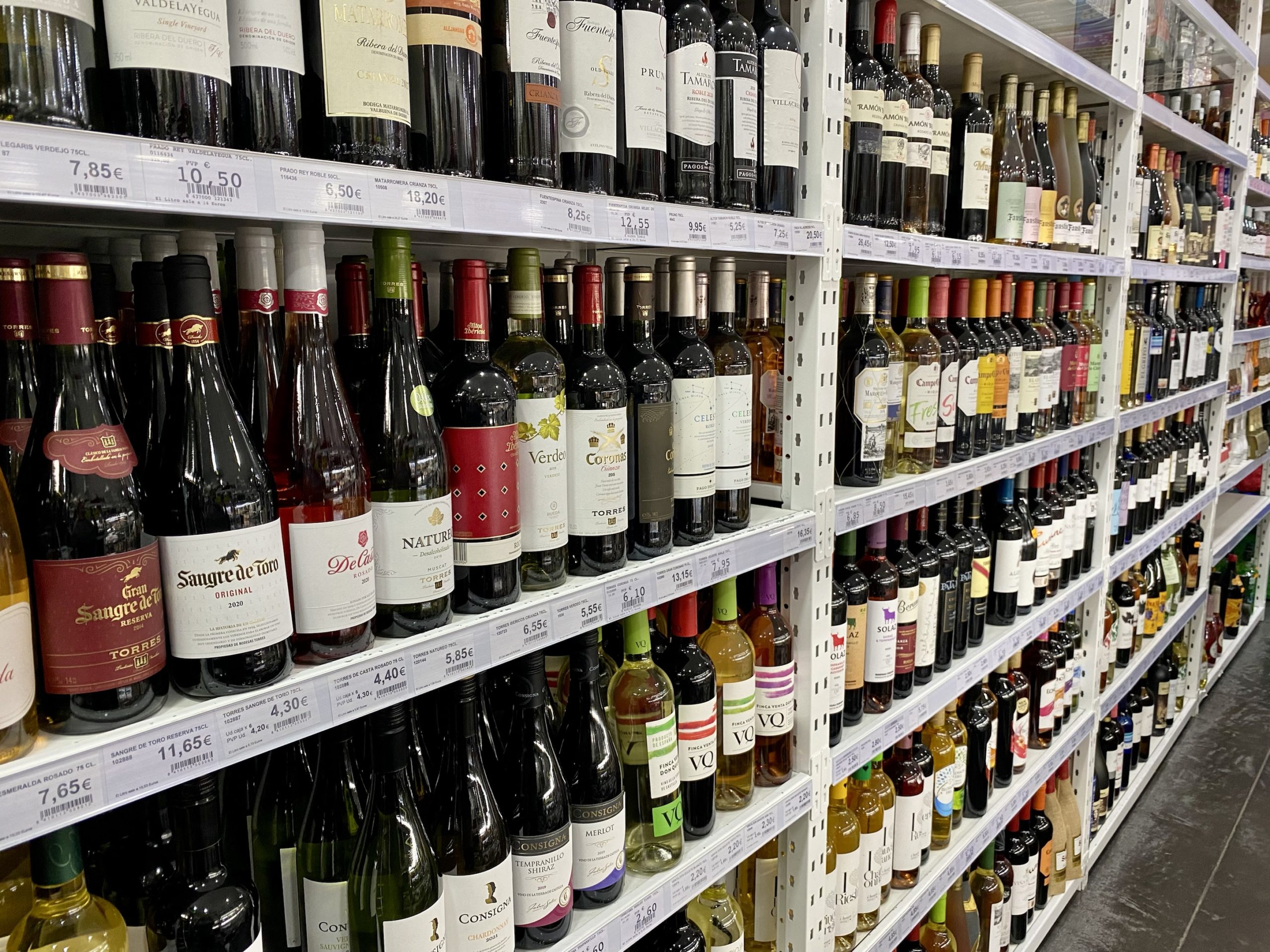
While having a lovely local dinner at Tasca Luis we purchased two wines from the same producer, Bodega Vinarda (interview here). The white (Blanco+) is a blend of listan blanco and albillo criollo. Both of these indigenous grapes are found in whites throughout the Canaries. Listan blanco is also known as palomino (a common grape for Sherry), but albillo criollo appears to be only grown on the Canaries and is unrelated to the albillo grape from the Iberian peninsula. The white was aromatic and had notes of apple and pineapple, and the salinity notes would make a great pairing with shellfish.
The red was a 100% vijariego tinto, which is also a grape only grown on the Canaries. It was a great light red wine, especially to pair with the local dishes of rabbit or goat. Some smoke and red fruit, but also a young, uncomplicated wine without a lingering finish.
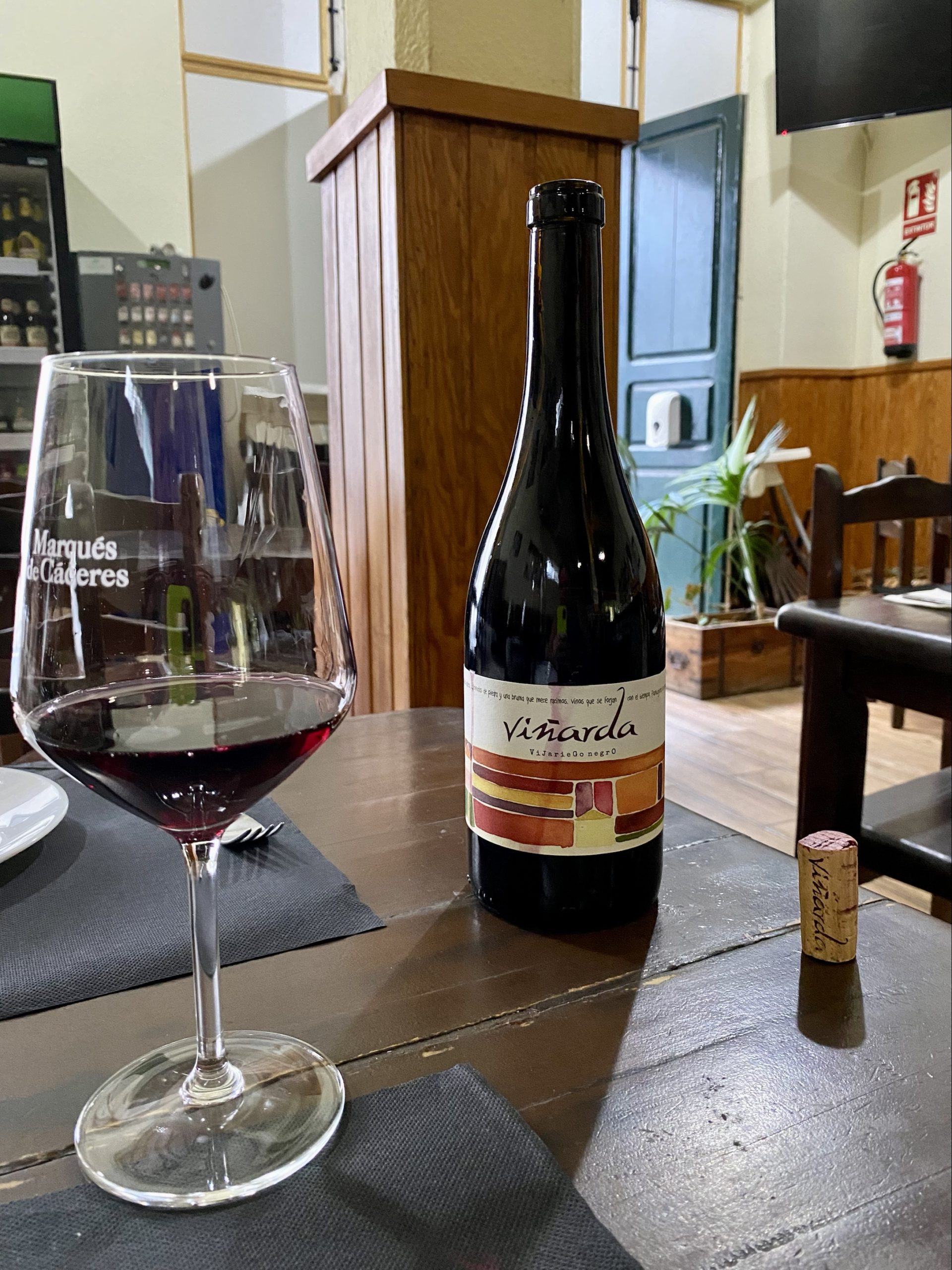
Tenerife
We booked a driver through Oditen, One Day in Tenerife. Felix arranges custom tours based on personal preferences and his own connections and experiences. He picked us up at the port and provided interesting information as we travelled across the island and away from Santa Cruz. Felix knows his island well, and showed us how the weather and terrain affected the agriculture, as well as bringing us through some viewpoints and historic areas. We highly recommend Felix and Oditen!
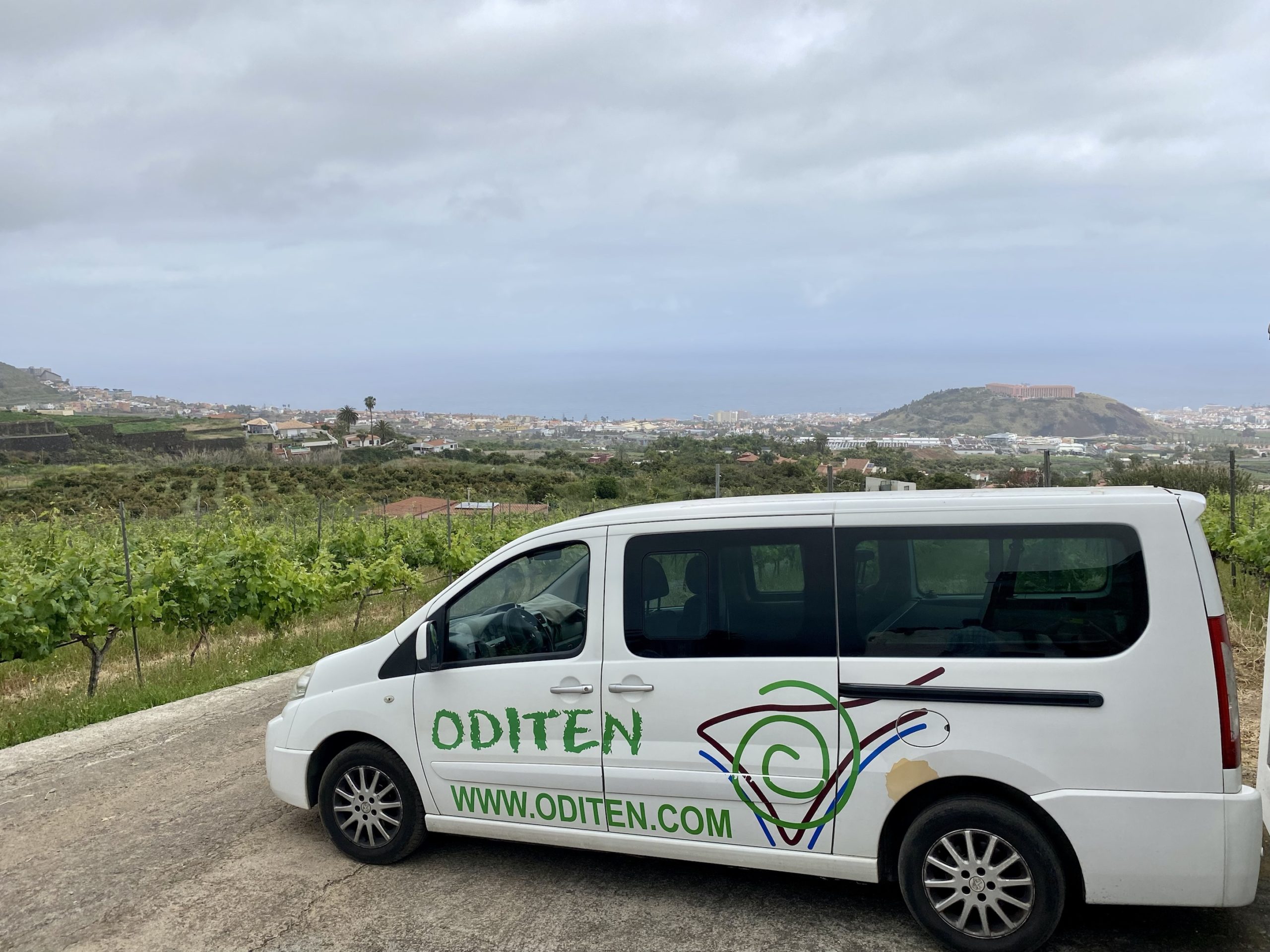
Kelsey had recommended Bodega Tajinaste for us to try, but they are closed on Sundays. However, Felix was able to provide us with a truly private tour. We drove first to some of their vineyards where we saw the unique “braid” method of vine training. By braiding the vines, it allowed for the vines to be moved so that other crops could be planted in the same space after the harvest (like the ubiquitous potato). A new tasting room is currently under construction in this spot. It looks like a great terrace overlooking Tajinaste vineyard.
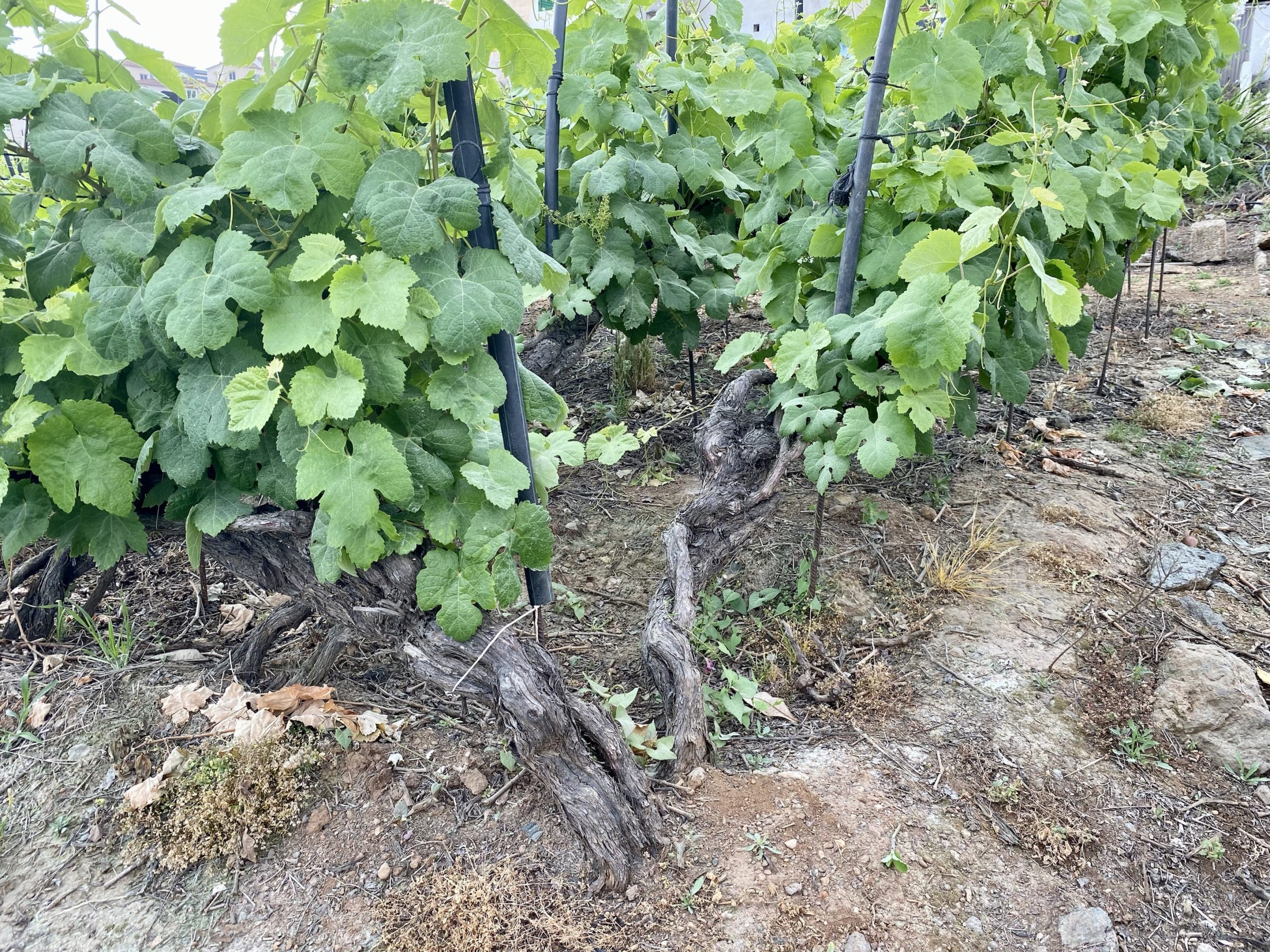
Then we drove to the tasting room, where the owners of Tajinaste had provided a key for Felix to enter. The tasting room was clean and white, allowing for the color of the wine to show through. Check out this drone video that Felix took, which shows the vineyard and terrain during harvest.
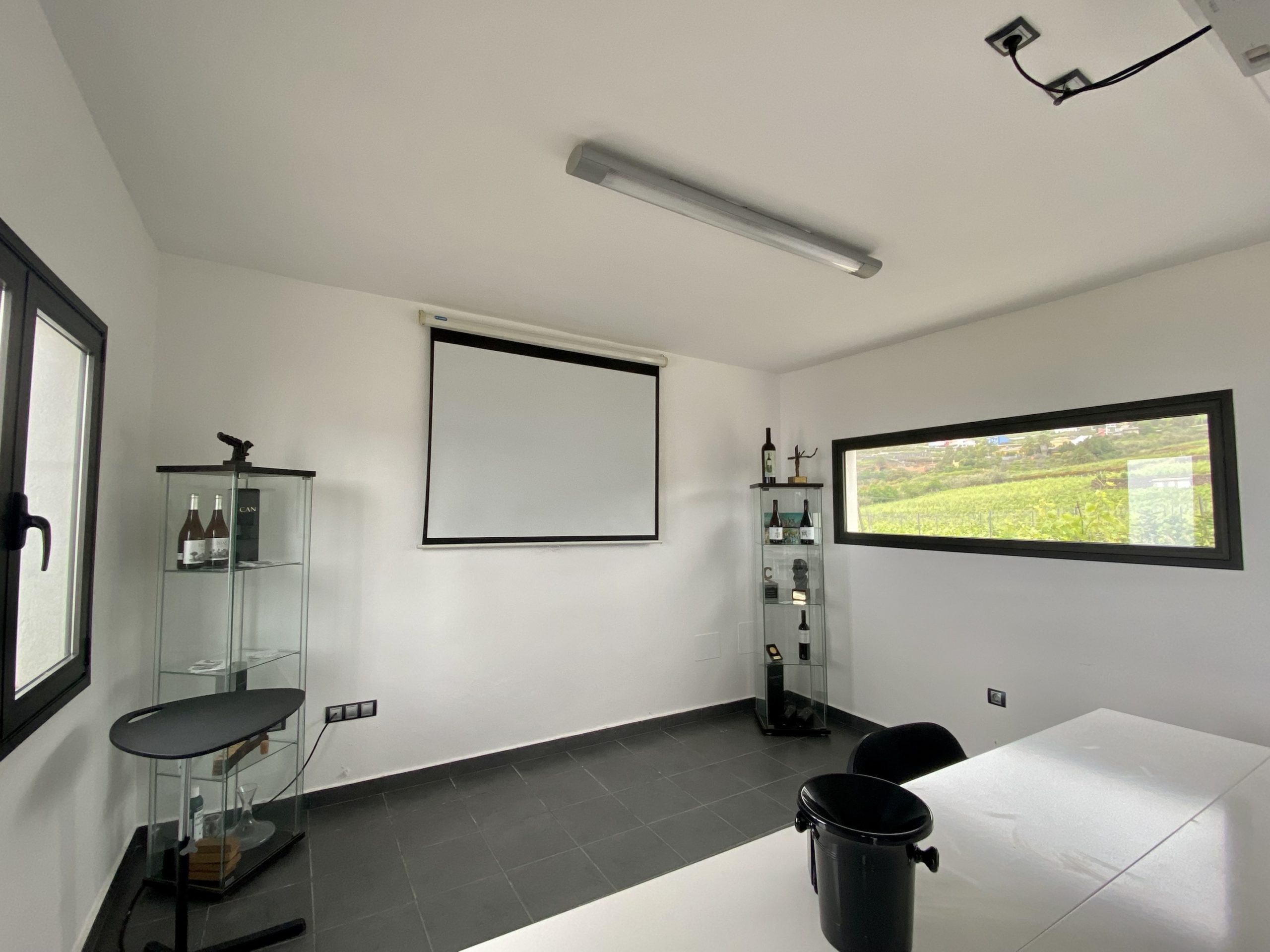
Three bottles of wine were reserved by the owner for us to try. The first was the Tajinaste Tinto Tradicional, 100% listan negro. This is their base-level wine, with only part of the wine spending time in oak. They also produce listan negro wines with further aging, or made fully with old vines.
Listan negro is another grape that is native to the Canary Islands, and is used commonly in their red wines, although it is easy to confuse it with listan prieto (aka Mission or Pais), which is also grown on the Canaries.
The second wine was their Can bottling, which is a blend of listan negro and vijariego negro, that spent nine months in French oak. The vijariego and use of oak added a delicious depth. Buttered popcorn and blueberry on the nose, and it really opened up as we spent time enjoying it. One of Tammy’s favorites!
We finished with a white from their Paisaje de las Islas project, the malvasia aromatica y marmajuelo. Marmajuelo is another Canary-exclusive grape, and we will touch on malvasia below and the importance to the Canaries. This wine was fragrant and fresh, and could be paired with green salad, seafood, or chicken.
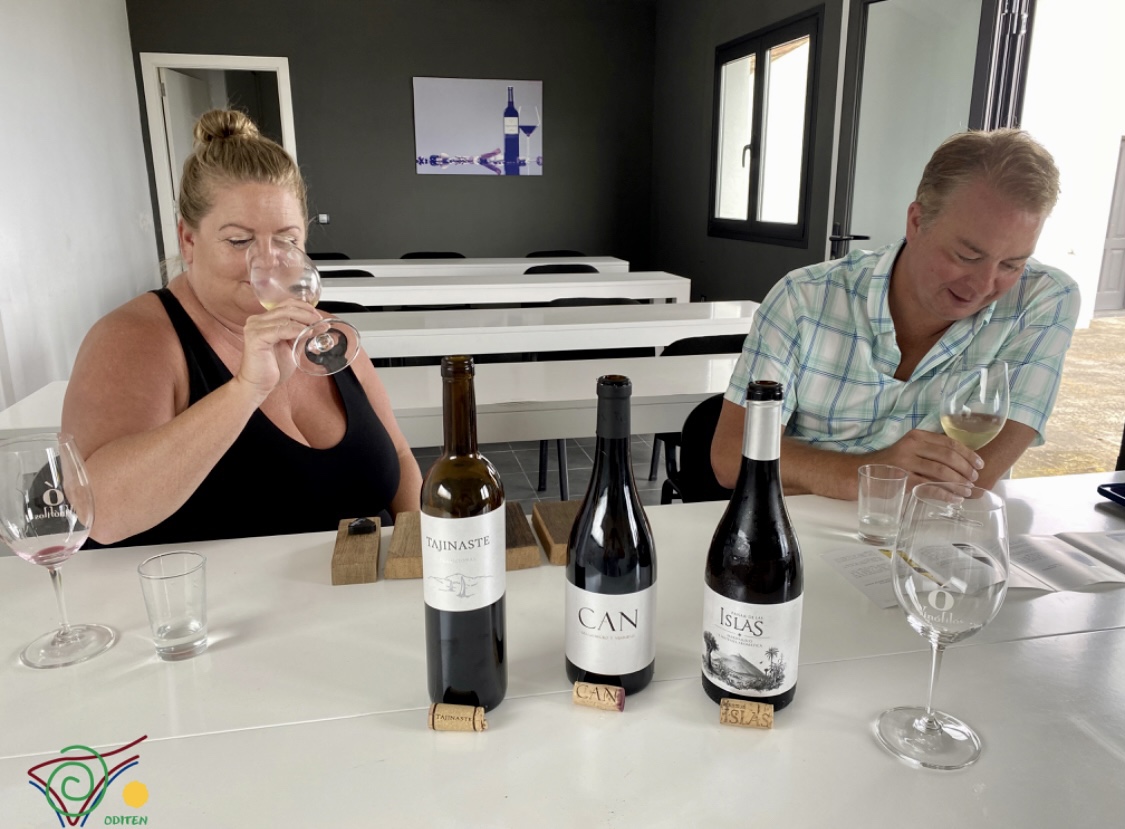
We were also able to explore the vineyard around the tasting room.
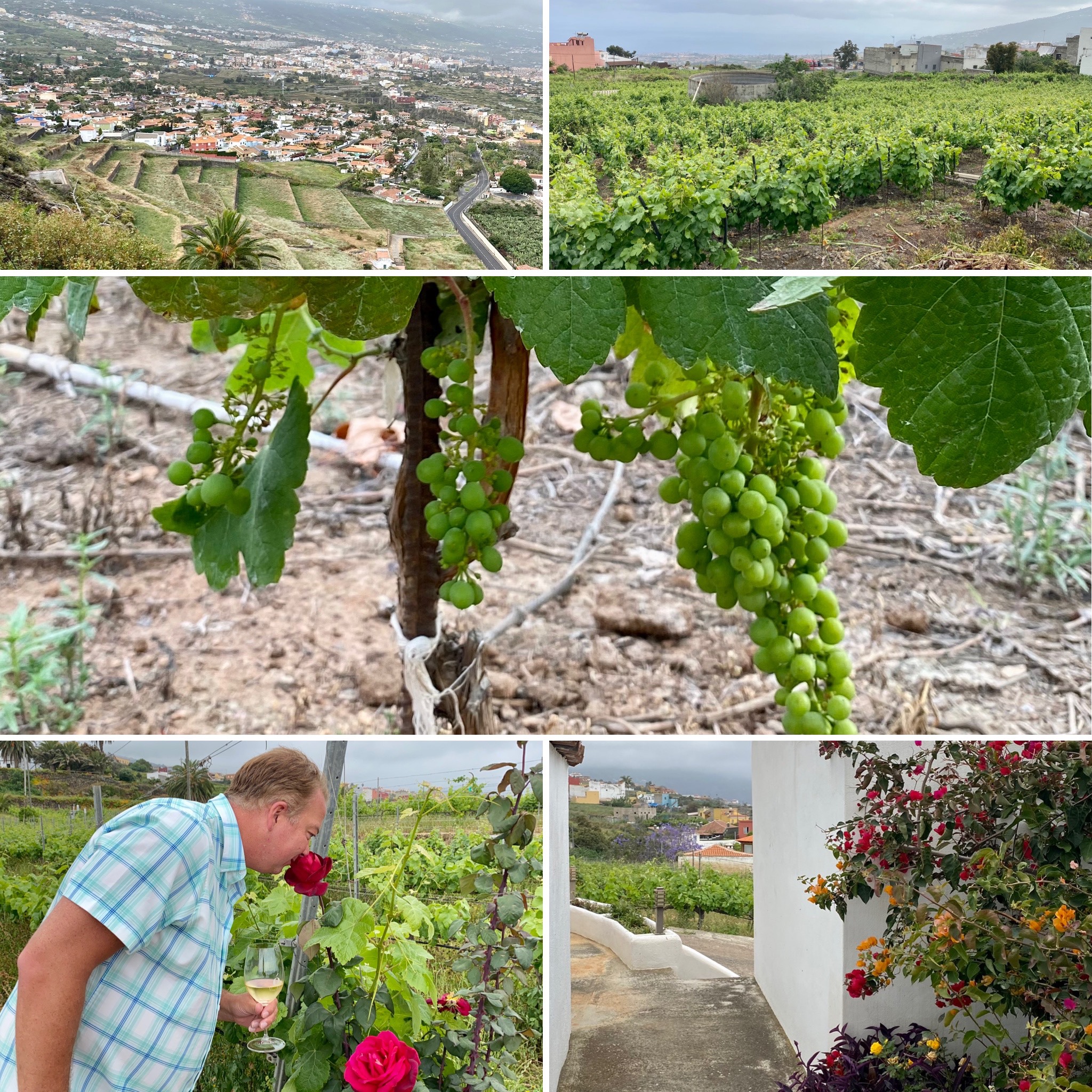
Following our time at Bodega Tajinaste, Felix took us to Tenerife’s Casa del Vino. This is a wine destination in an old hacienda, consisting of a fine-dining restaurant, a small museum, gardens and viewpoints, and an exceptional wine tasting program and store. It reminded me of what the Copia project in Napa Valley was aiming for.
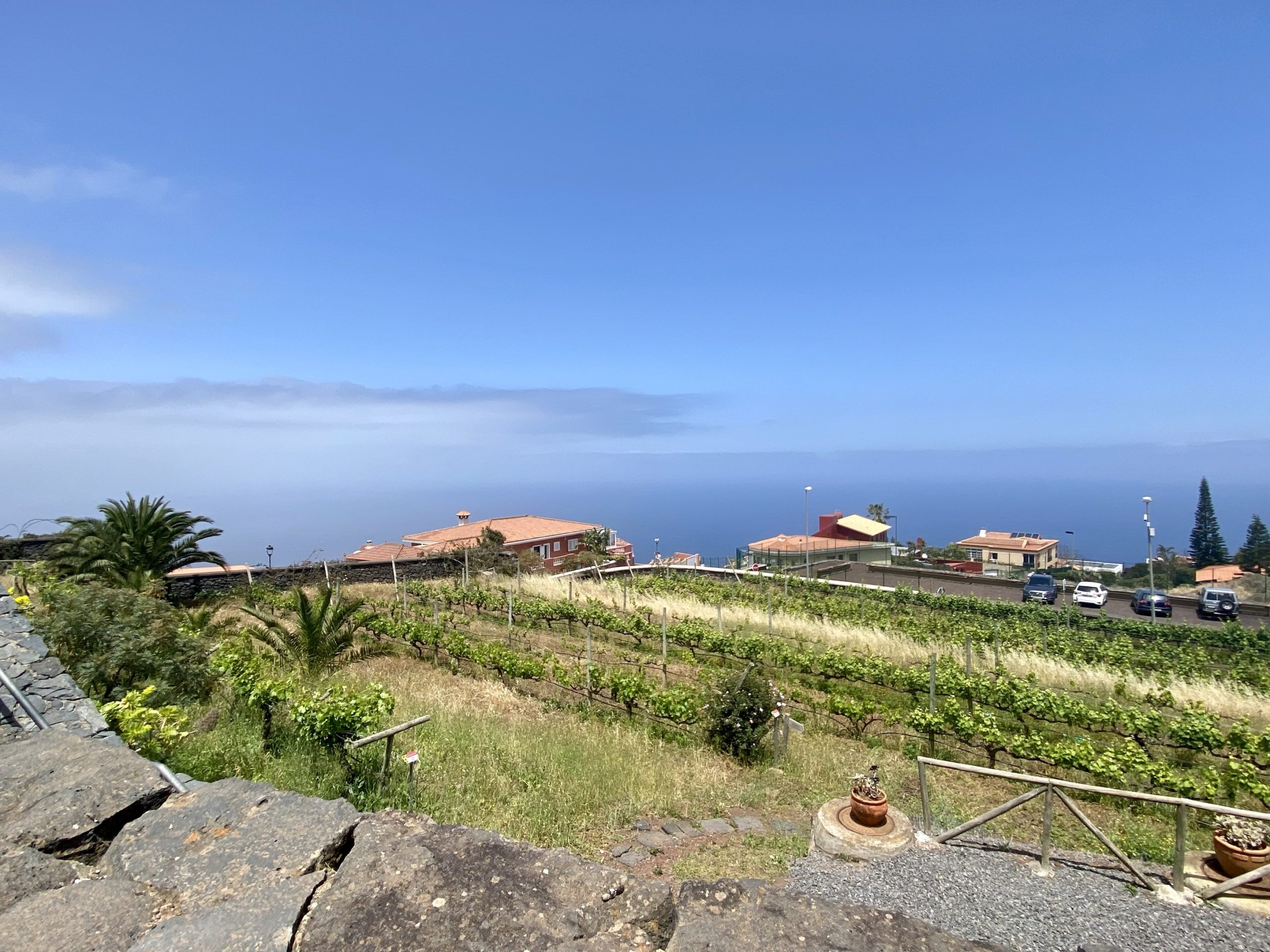
Casa del Vino offers around a dozen Tenerife wines to try (sparkling, whites, and reds), at prices that would easily allow for tasting all of them!
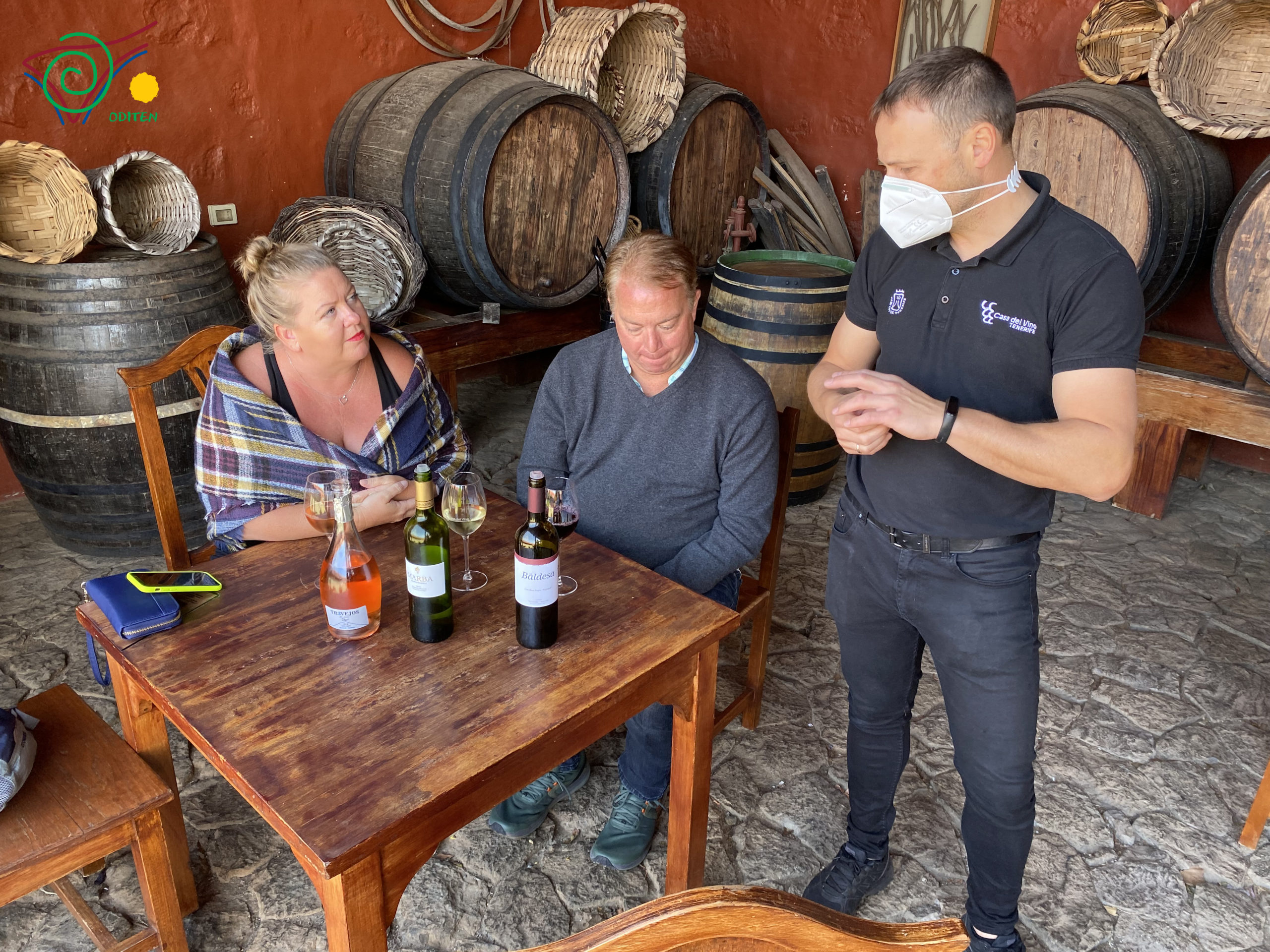
I’ve noticed some wine tasting experience differences in Spain. First, there is no measuring spout to limit the pour. Second, they leave the bottle at the table and walk away. You can examine the bottle, and pour second tastings for yourself. It feels like the training wheels are off, and that we have the independence to sip and savor, rather than having someone tell the story of the winemaker’s dog, or some high-pressure bottle selling.
The store also offered a tremendous selection of Tenerife wines, of which we purchased two additional bottles. The El Ancon Tinto Joven was another young listan negro that tasted similar to a Pinot Noir with more minerals and smoke.
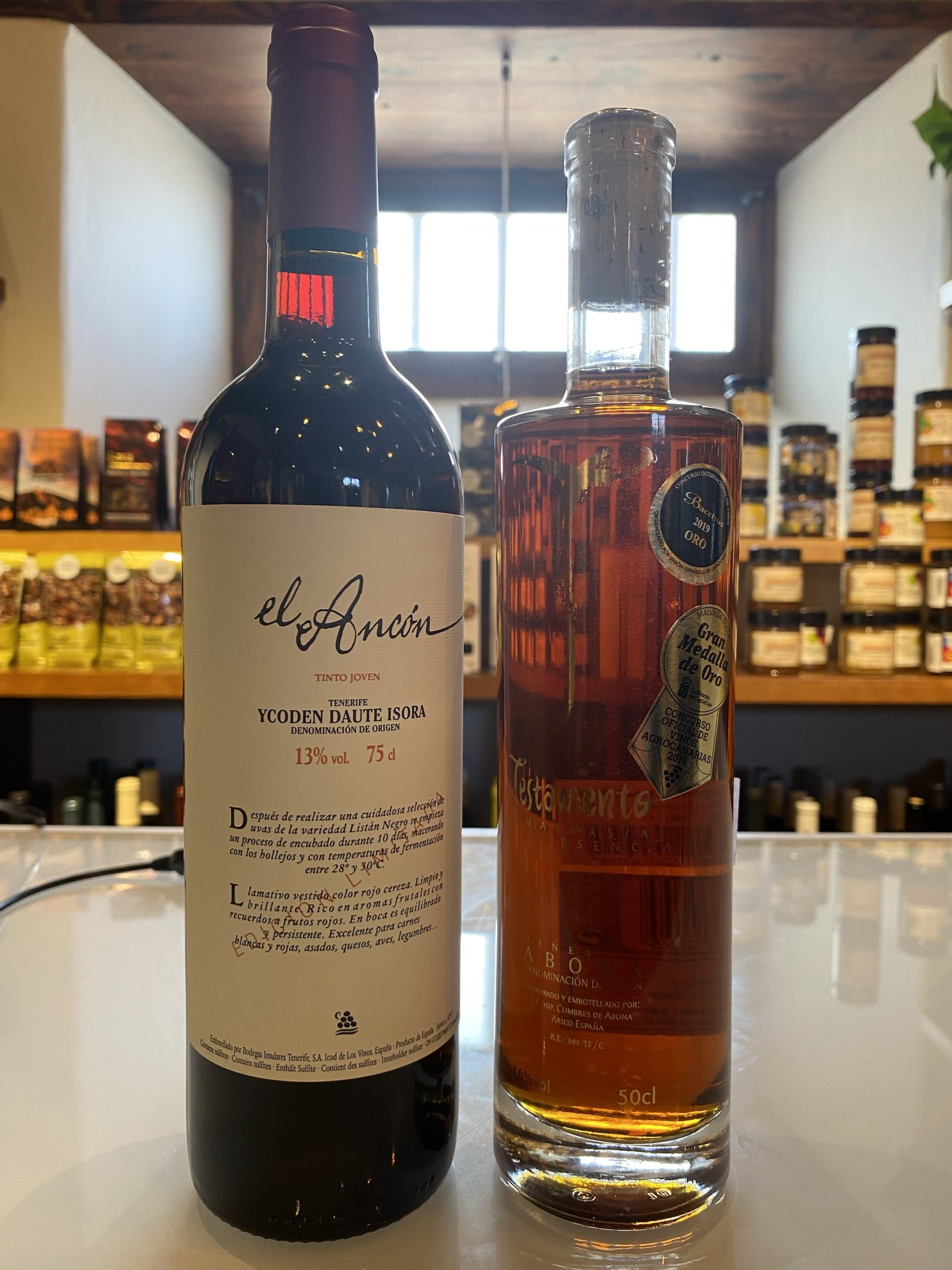
The Canary Islands have a long history of exporting dessert wines made of malvasia aromatica (noted by Shakespeare and George Washington, among others), and while it appears that dry styles are more typical at this time, we needed to try a good example of vino dulce. The Testamento Malvasia Esencia 2019 is as aromatic as the name suggests, with notes of candied oranges and apricot leather that really lingered on the palate.
Our one day in Tenerife was completed with a walk through a well-manicured park, with breezes off fountains to cool us down. We will look for Canary wines as we continue to travel, but we also know that most of the bottles produced there stay close to home.
